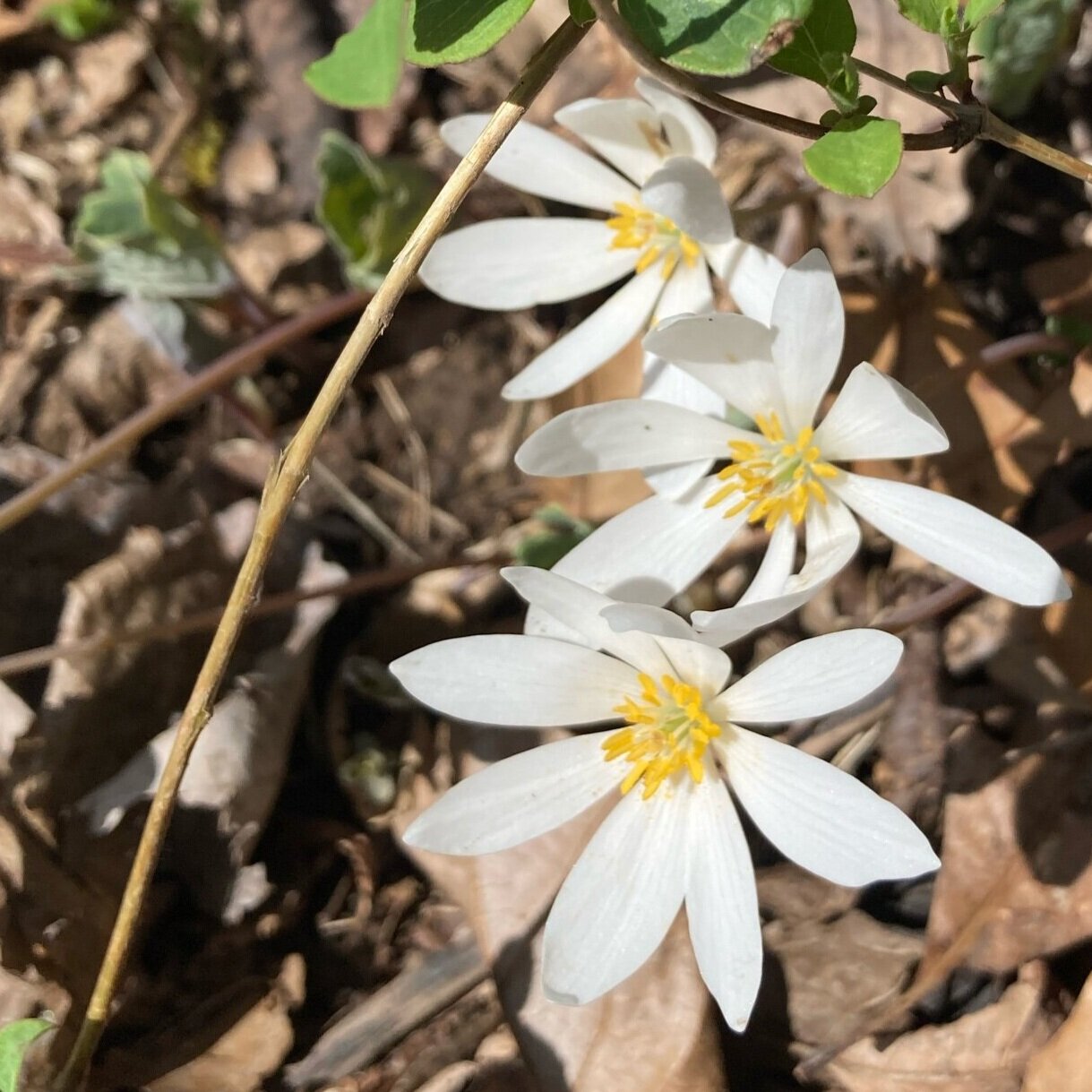The best time of year
It’s late summer, hot, lush, and in full leaf. With the forest edges completely overgrown with vines, honeysuckle, and poison ivy, I miss the openness and clarity of spring. I started this post on April 3, but I was so in love with the springtime and my walks in the woods that I couldn’t stand to take any time away to write about them. With working from home and the new dog needing lots of walks, this is the first spring when I have been out consistently, every day. I have also been exploring all of the parks and paths near me where I never explored before. Everyday around 1pm I went out to see what was stirring in the earth. It was so much fun to see everything happen day by day.
Compared to summer, things are simpler in springtime. The sprawling vines and invasive shrubs haven’t covered the forest floor. You can see the structure of the forest layers and zones, such as the line between the skunk cabbage and the mayflowers on the hillside. Things have a purity and it’s all possibility. Plus, the frogs are calling. I really love that. I don’t know why, I just love frogsong. Maybe because it’s part of spring and it’s special because it’s such a short time to at it’s happening. It also sounds beautiful to me.
First of all, things were coming alive and just emerging. One day I was walking in an area that I know has a lot of Mayapples, but I didn’t see any. Then I saw just one poking up. Then I turned the corner to sunnier area and the mayapples were up! The Earth was still too cool for them to be up, but in that spot that was warmed extra by the sun, they had just reached the right conditions the start emerging.
My first mayapple (Podophyllum peltatum) of spring just starting to emerge.
A mayapple plant just up, with its umbrella not fully open yet.
The lovely lettuce of young leaves of a rue (Thalictrum sp.) just coming up.
Variations on a theme: a dew drop on the fresh foliage of columbine (Aquilegia canadensis) .
Another day I took a hike on a local hill where the woods were full of bloodroot. Bloodroot is a little white flower that grows on the forest floor. They flowers are like small water lilies, and the leaves are a powdery green in a unique wide splotchy shape. The mountainside was covered with them. It was gorgeous, and all the more for being fleeting. I think I must have happened to be there on the day with the most blooms because I went back the next week and there were only a few bloodroot left in flower. There are other spring ephemeral flowers, such as the aptly named spring beauties (Claytonia virginica). They blanket the forest floor completely in April, but by June there will be no sign of them. There is an excitement to seeing something when you know it won’t last—it’s the essence of living in the moment and appreciating what is in front of you—a kind of bittersweet, but mostly sweet, feeling.
A bloodroot flower (Sanguinaria canadensis) in bloom on a sunny hillside in early April. To the left of the bloom, the fruit is starting to form on the upright stem of a bloodroot flower that already wilted. Around th base of the stem you can see the whimsically wavy leaf.
Some spring beauties (Claytonia virginica) doing their thing.
In early spring, there are a lot of small, subtle flowers. Many are on trees. They aren’t the large, showy blooms of lilies or sunflowers, rather they are tiny, delicate things with lots of threadlike stamens. They can only be appreciated, or even seen, if you take the time to look closely. Again—blink and it will be all gone as the trees leaf out.
The flowers from a red maple tree (Acer rubrum). I learned that they are named for the red color of their flowers.
Flowers from spicebush (Lindera benzoin). The rather generic foliage makes these shrubs blend into to the forest in the summer, but in spring they are very obvious from the yellow flowers, and again in fall from the yellow leaves.
Now, in the thick of summer, I can really appreciate the time when there were no bugs, no poison ivy, no oppressive heat or humidity. Things are still growing and changing all the time, but it’s harder to parse and follow than when the woods were mostly empty. As my patch of earth tilts away from the sun, I am already dreaming of the days when the woods will be made new again.













